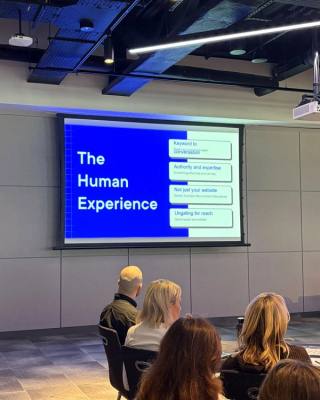Nothing ever stays the same in marketing.
With the sudden arrival of GEO content strategies, this has never been more true. As audiences (and particularly high-interest audiences) shift towards LLMs for answers, your content needs to adjust accordingly.
Fortunately, GEO is not as scary as it sounds, and can deliver high-value traffic directly to your site. Here’s Kooba’s guide on building AI-friendly content:
What is GEO, and why should you care?
GEO stands for Generative Engine Optimisation, and refers to the production of content for use by large language models (LLMs). Just as SEO content aims to place highly on search engine ranking pages, GEO content aims to appear when users make certain queries to LLMs. Given the rapidly increasing popularity of LLMs (one study conducted by Semrush predicts that their total traffic will surpass those of search engines by 2028), and the integration of AI into traditional search engines, this is becoming a vital strategy for content marketers and web developers to understand.
How is this different from conventional SEO?
In some ways, GEO and SEO are remarkably similar. Both AI tools and traditional search engines are trying to do the same thing, namely connect readers with useful and accurate content and resources. As I have already argued in a previous blog, just writing high-quality and relevant content is the easiest and simplest way to improve your performance across both search engines and LLMs.
That said, there are unique challenges (and opportunities) that come with GEO. Firstly, LLMs are more intelligent and context-aware than traditional search engines. That means that content doesn’t need to be jammed full of keywords to rank highly, as long as it discusses a relevant topic in a useful way. Likewise, GEO is harder to “trick” compared to older search models, as it can better understand the legitimacy of the content it reads.
One irony of this new search meta is that AI generated content may be punished by the same LLMs that produced it to begin with. This isn’t something that we can test yet, but the reckless production of AI copy will certainly be punished by both Google and context-aware LLMs which prioritise credible, evidence-based, claims. This is also one of the reasons we’re still cautious about generative web design (as opposed to a more secure segmentation approach).
Does your technical setup still matter?
Just as an overlap exists between best practices in content writing for GEO and SEO, a robust technical setup will deliver dramatic performance benefits on both search engines and LLMs. By creating a clearly structured backend architecture, your content will be more accessible to both human and AI readers. And, as a bonus, it will make your page more accessible to disabled visitors using assistive technologies!
This is something that concerns backend developers more so than content writers or designers, but is a vital consideration for anyone producing content without a functional CMS. To see the difference a marketing-optimised backend can make, I’d recommend Christian Rochford’s blog on the topic.
Your GEO checklist
- Write good, useful content that prioritises clarity, depth, and relevance. LLMs look for content that satisfies user intent, not just surface-level buzzwords.
- Build credibility with external links that cite reputable sources. Linking out to data-rich or institutional domains helps validate your expertise.
- If relevant, use images to add context and aid comprehension. This can increase the chance of inclusion in AI-driven summaries.
- Use hard evidence whenever possible. Quantifiable claims enhance trust and improve the likelihood that content is picked up and cited by LLMs.
- Make sure your technical framework is clear and accessible. A logical structure, semantic markup, and accessible design will help both AI engines and human users engage with your content more effectively.
Keeping up with evolving LLM algorithms
Unfortunately, there will never be a perfect piece of GEO content. As LLMs learn, adapt, and improve, our strategies will need to be updated continually. The good news is that Kooba are determined to stay ahead of the curve! If you’d like to learn more about our approaches to GEO, adaptive design, and AI-powered UX solutions, just get in touch with our team, we’d love to talk.








